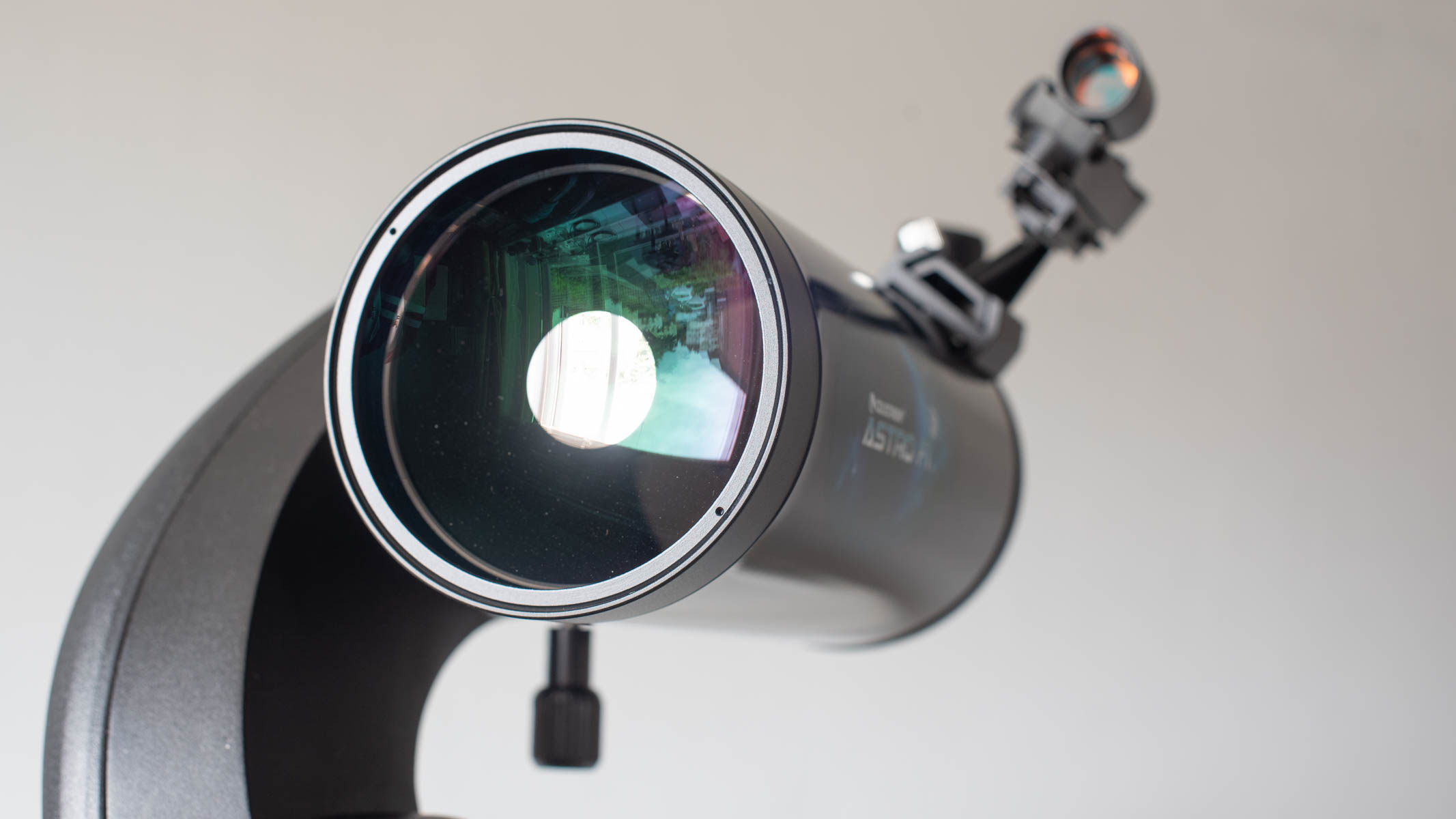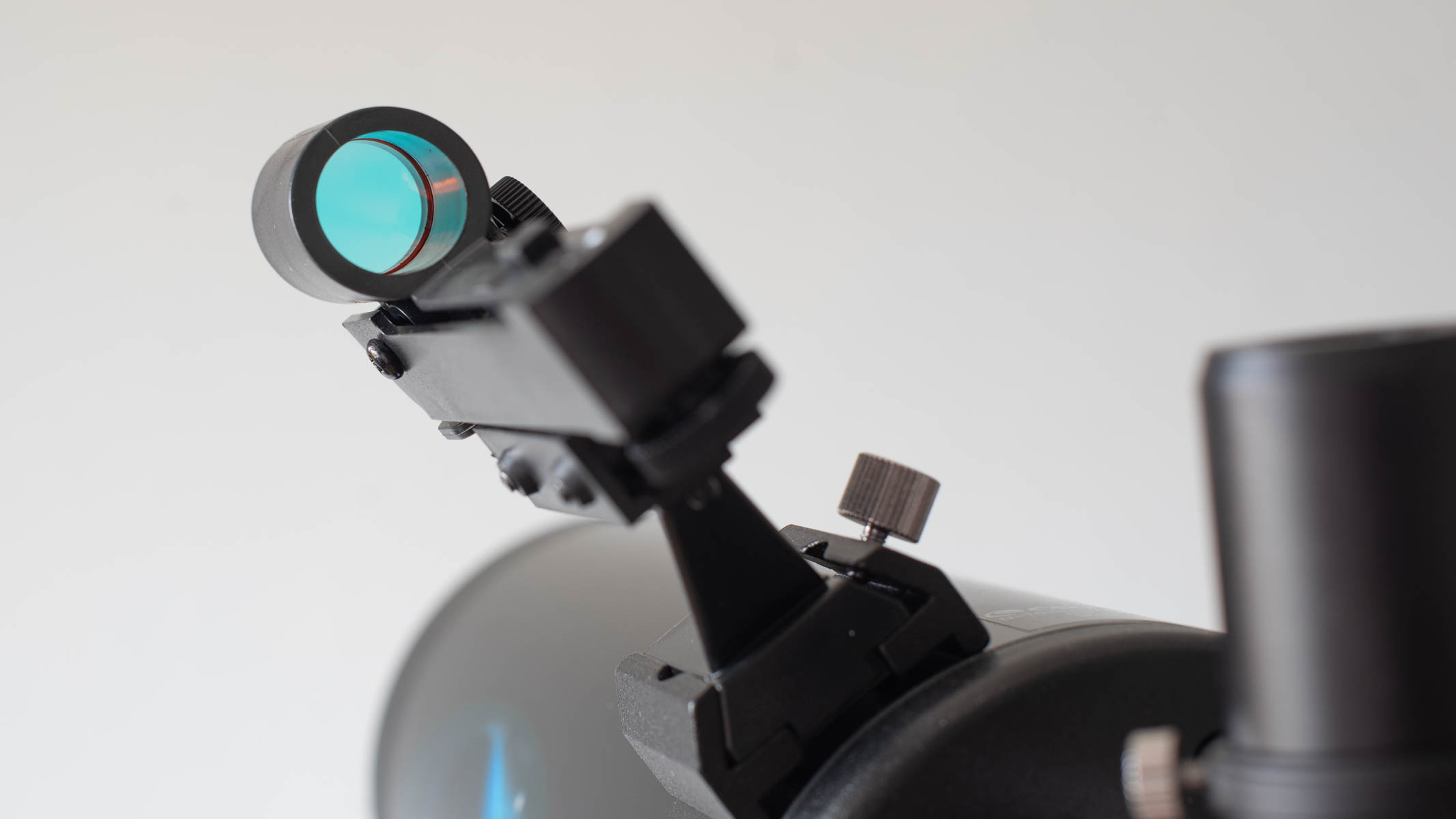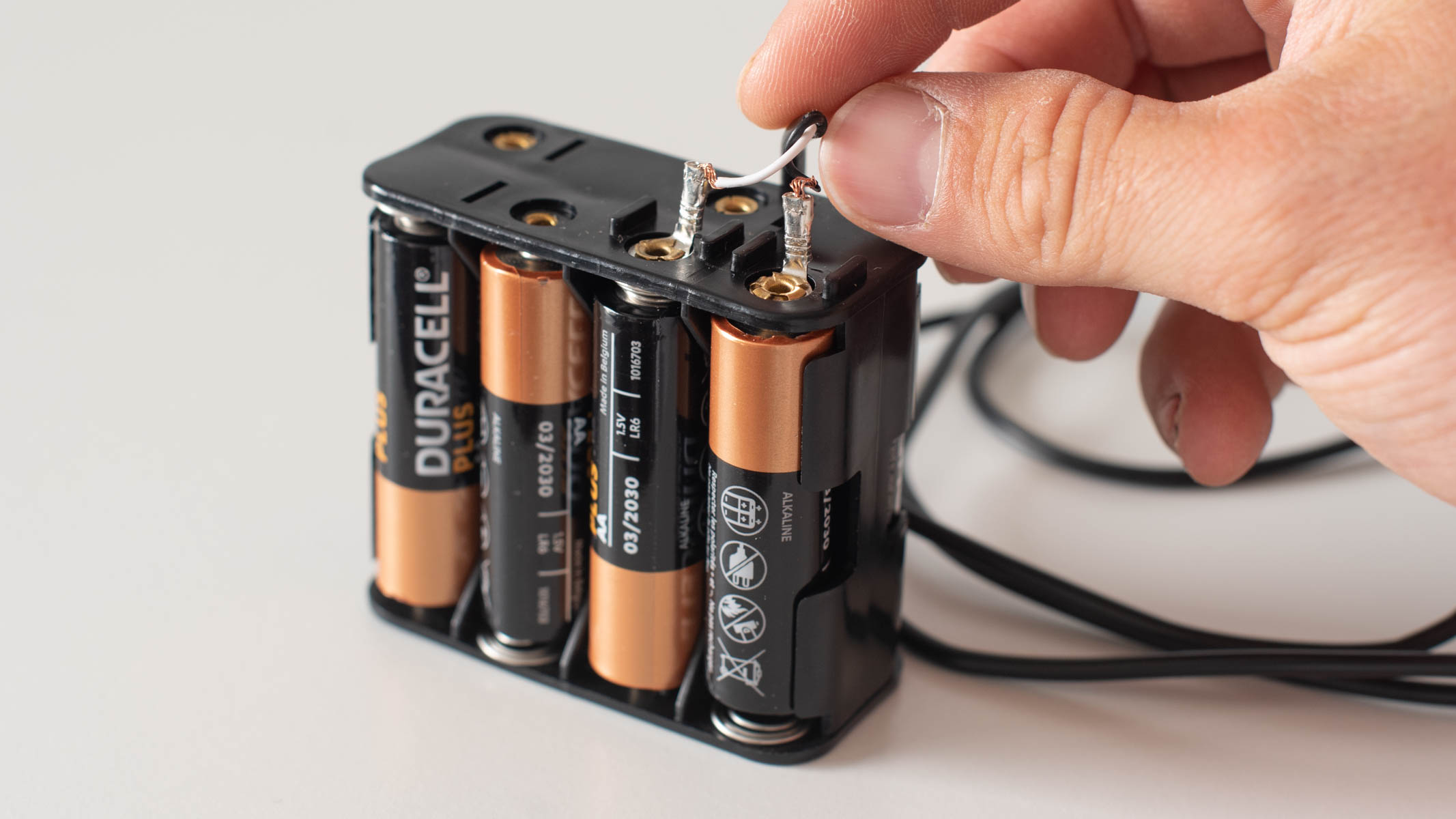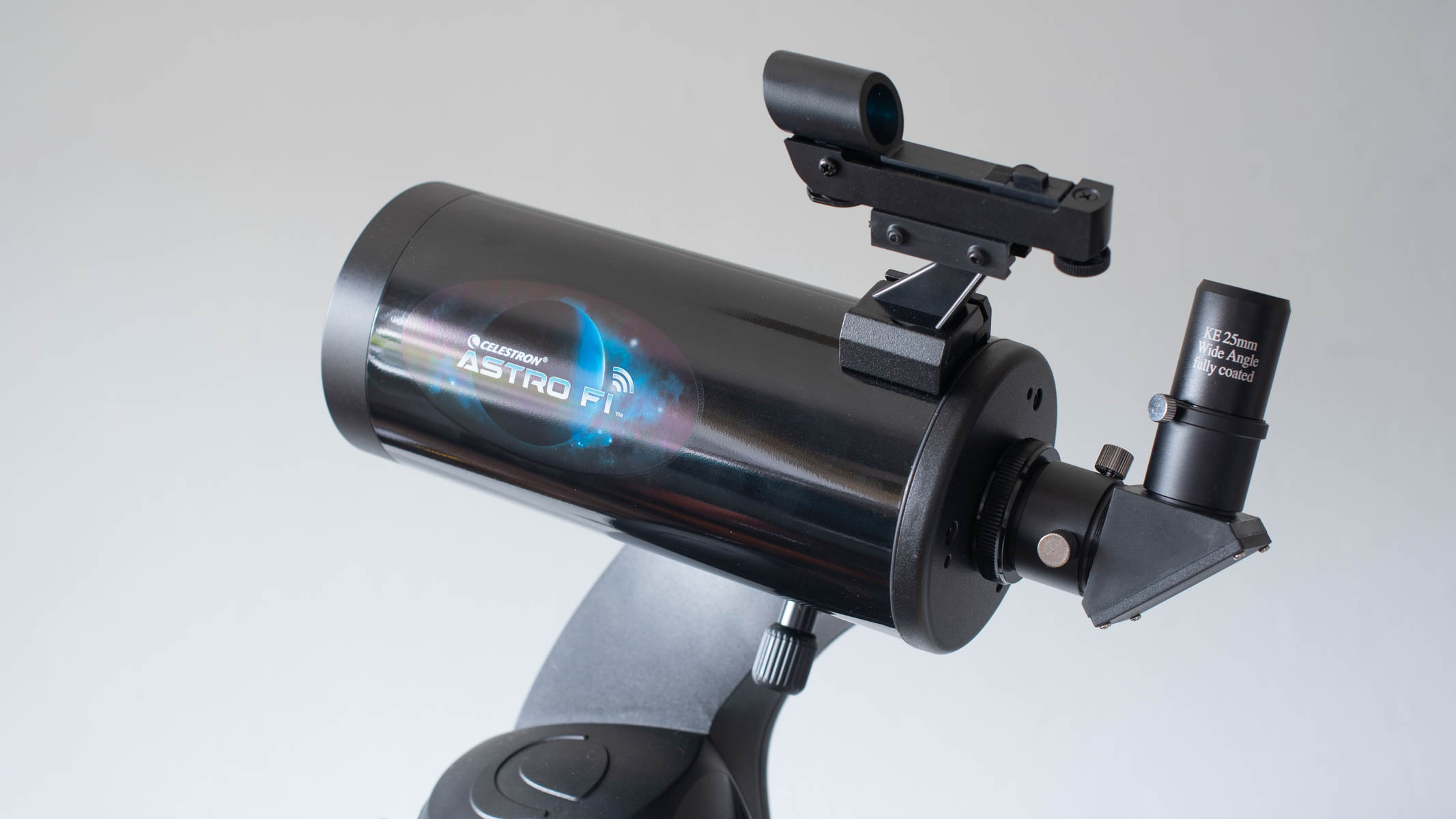Space Verdict
While the motorized mount can initially be tricky to set up for beginners, it comes at a reasonable price for a decent night sky view. A compact Maksutov-Cassegrain catadioptric design, the Celestron AstroFi 102 is a basic telescope best suited to lunar and planetary observation.
Pros
- +
Very portable thanks to its lightweight design
- +
Reasonably and fairly priced
- +
No prior experience needed
Cons
- -
Optics could be better
- -
Tripod isn't the best quality
- -
Doesn't feel like a premium product to the touch
Why you can trust Space.com
The Celestron Astro Fi 102 is an easy-to-set-up motorized go-to telescope that would be ideal for budding astronomers on a modest budget, who are looking for a scope from a trusted brand. Thanks to its compact body, it is easy to move from place to place and, because it is a go-to, Wi-Fi-enabled telescope, no prior knowledge of the night sky is needed to start exploring and enjoying it.
Optical design: Maksutov-Cassegrain
Aperture: 102mm
Focal length: 1325mm
Focal ratio: f/13
Eyepiece focal length: 25 mm and 10 mm
Total kit weight: 6 lbs/2.7 kg
Mount type: Computerized Alt-Azimuth Single Fork Arm
The image is pleasing, with some expected (at this price point) image fall-off around the edge of the field of view. Despite this, we'd recommend it as a beginner telescope. Alternatively, this would suit someone interested in astronomy that wants to observe celestial objects without learning to navigate the night sky themselves. Similarly, we'd recommend it for those without the desire to push their astronomy knowledge beyond the basics, as the opportunity for this with the Astro Fi 102 is limited. However, we do think this telescope is worth scoping out which is why we've included it in our buying guide for the best beginner telescopes. We have taken a closer look to help you decide whether this is the beginner scope for you.
Celestron Astro Fi 102 telescope: Design

- Basic plastic casing
- It is highly transportable
- Tripod isn't sturdy and needs weighing down
Weighing in at just 6 lbs (2.7 kg), you can take the Celestron Astro Fi 102 anywhere, a great grab-and-go option without having to empty your car boot to make room for your telescope or plan extra luggage allowance for your trip. You could easily take it with you on a hike and forget you're carrying it. Its compact size also makes storing it much easier than larger telescopes which can take up considerable space.
Of course, to make it lightweight and relatively affordable (for a motorized Maksutov-Cassegrain, anyway) there have been some compromises on quality, especially regarding the final finish on the scope.

The plastic casing is acceptable but we don't think it could survive a substantial knock or a soaking from a passing shower as the seals aren't great, unlike some of the hardier, fully-sealed telescopes available. A little manipulation of the single fork arm base and you can virtually peer into the motor housing, viewing wires and more. While astronomers don't tend to head out in a rain storm to view the stars, the odd passing shower does come from nowhere sometimes so those wanting to grab this telescope will want to cover it before it starts raining.
The adjustable tripod is pretty flimsy, although the accessories tray which holds the eyepieces and any other miscellaneous accessories is quite handy to stabilize the tripod legs.
The finderscope is very helpful in aiding the alignment and location of stars. As standard with red dot finderscopes, its bright red illumination can be dimmed via the controlling knob on the side to suit whatever observing situation you're in, whether it's just after dusk in a city or a fully dark night sky reserve in the middle of nowhere. It slides onto the tube as easily as the tube does onto the single fork arm CG-5 dovetail mount — with minimal fuss.
Celestron Astro Fi 102 telescope: Performance

- Initial set up tricky, but after that, it's a breeze
- Seamless syncing with the SkyPortal App
- Fiddly to change batteries in the finderscope
The images you see through this scope aren't going to blow your mind, but you will be treated to good views of the moon and its craters. You'll also get a closer look at Saturn's famous rings, Mars, and the big guy, Jupiter. You may see Uranus and Neptune, too, in the right conditions. Other nebulae deep sky objects are visible in dark skies, such as those found in our best locations for astrophotography and stargazing guide. The edges are a little soft, but we'd only expect edge-to-edge sharpness from much more expensive scopes.
25 mm and 10 mm eyepieces
Smartphone adapter built into lens cap
Adjustable tripod with accessory tray
It's quick and easy to sync with the SkyPortal app, which can be set up on any smart device with Apple App Store or Google Play. The telescope has integrated Wi-Fi, and despite some previous reviews we had read before testing, it seemed stable and reliable when paired with our Android device (Samsung S20 FE). The SkyPortal app features around 100k celestial objects to which you can make your motorized go-to telescope automatically slew. It slews at a reasonable rate and is not as frustratingly slow as some can be. It's pretty quiet too. You can also use a USB video game controller to slew and position the scope if you're a gaming nerd or want that extra sensitive control over the telescope's movements. Alternatively, you can use Celestron's remote hand controller for an additional cost.
Celestron Astro Fi 102 telescope: Functionality

- Reliable integrated Wi-Fi
- Quiet operation
- Large database of celestial objects on SkyPortal
The Celestron Astro Fi 102 comes with an integrated smartphone holder in the form of some simple elastic straps built into the lens cap. It seems a little unnecessary, but it might be a useful tool for people who put their phone down between uses and are prone to forgetting where they have left it.
One slight oversight we found is the build quality of the battery pack, which we plugged into a 12V DC port. The power cable can become twisted around the mount when the scope is slewing and the copper cables are easily pulled out of the basic crimped connections. More advanced models have overcome this problem by having a robust jack port, external inputs and battery bank built into a stationary section of the mount which stops cables from being over-stretched or twisted. That or a more robust connection, perhaps sealed or supported by heat-shrink plastic would help avoid this problem.
We should also mention that once you've finished using the finderscope, turn it off to preserve power. It's fiddly to change the battery, so it's best to have to do it as little as possible.
Should you buy the Celestron Astro Fi 102 telescope?
The AstroFi 102 is a good telescope for a child or beginner who wants to look at the moon and some planets, but it would be a struggle for those that want to take it further with additional accessories to achieve what they need. With telescopes, you usually get what you pay for, which rings true with the Celestron AstroFi 102. The quality and durability won't win any awards, but with care, you shouldn't have any problems using this for plenty of skywatching enjoyment. We're pleased with its compact size (thanks to the Maksutov-Cassegrain design) and minimal weight. To get maximum enjoyment, we'd suggest investing in a sturdier tripod for greater stability.
If the Celestron AstroFi 102 telescope isn't for you
Because you're mainly paying for the electronic motor on the AstroFi 102, you'd perhaps do well to save some cash and consider the cheaper push-to Celestron StarSense Explorer DX 102AZ, which we reviewed last year. You still have access to the app, which will help you find objects in the night sky, but it won't move electronically for you. Some traditionalists might even prefer the more tactile approach.
The Celestron Inspire 100AZ refractor, which we reviewed recently is also an excellent budget, beginner telescope and is suited to those who want to dabble in some smartphone astrophotography as well. It comes with a much more robust tripod and is much more reasonably priced as well — great for those that have a tighter budget.
Join our Space Forums to keep talking space on the latest missions, night sky and more! And if you have a news tip, correction or comment, let us know at: community@space.com.

Jase Parnell-Brookes is the Managing Editor for e-commerce for Space and Live Science. Previously the Channel Editor for Cameras and Skywatching at Space, Jase has been an editor and contributing expert across a wide range of publications since 2010. Based in the UK, they are also an award-winning photographer and educator winning the Gold Prize award in the Nikon Photo Contest 2018/19 and named Digital Photographer of the Year in 2014. After completing their Masters degree in 2011 and qualifying as a teacher in 2012, Jase has spent the last two decades studying and working in photography and publishing in multiple areas, and specializes in low light optics and camera systems.











